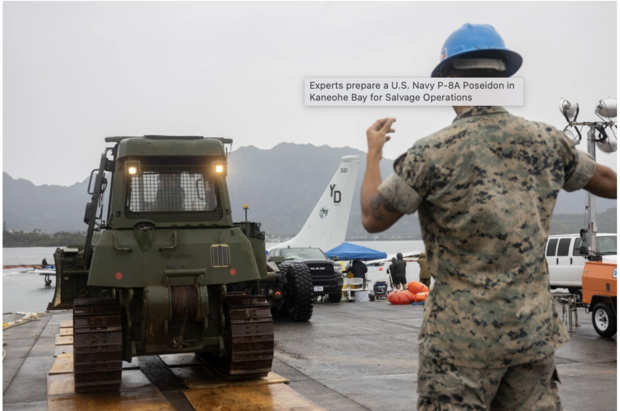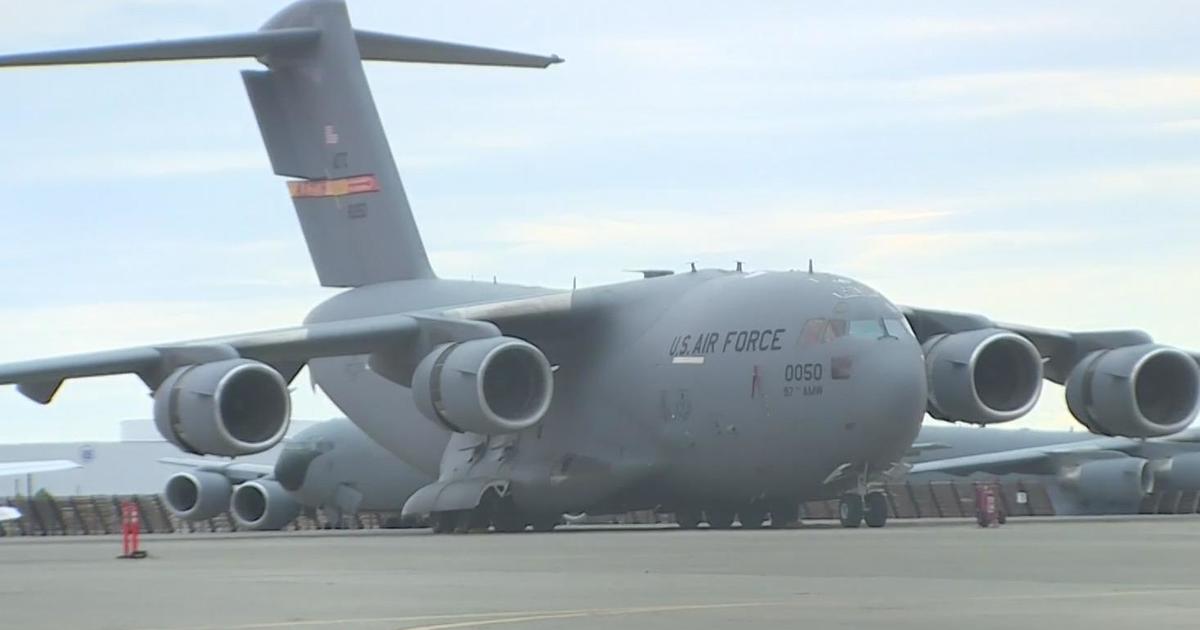Navy releases $1.5 million plan to remove crashed jet still stuck underwater on Hawaiian coral reef
The Navy released a $1.5 million plan to remove a surveillance plane that overshot a runway at a military base in Hawaii and splashed into Kaneohe Bay, which is home to coral reefs, a breeding ground for hammerhead sharks and a University of Hawaii marine biology research institute.
The salvage operation is estimated to be in that price range, a Navy spokesperson confirmed to CBS News, and "about $200,000 has been spent as of Dec. 1."
The Navy spokesperson said they will have "more accurate figures after the salvage operation is complete but are focused on safely recovering the aircraft, protecting the environment, and doing it in a way the retains the aircraft's combat capability."
The U.S. Navy plans to use inflatable cylinders to lift and roll a jet plane off a coral reef in Hawaii before removal from the ocean waters where the aircraft crashed on Nov. 20.
Rear Adm. Kevin Lenox, the commander of Carrier Strike Group 3 who is leading the salvage effort, said Friday he is confident the operation can be carried out without further damaging the reef.
The P-8A slammed into an environmentally sensitive bay about 10 miles from Honolulu when it overshot the runway at Marine Corps Base Hawaii. None of the nine people on board at the time were injured. The Navy is investigating the mishap.
The Navy released underwater video on Wednesday showing landing gear wheels resting on parts of crushed coral and much of the rest of the plane floating above the reef in Kaneohe Bay.
A Navy team already has removed nearly all of the estimated 2,000 gallons of fuel that was on the aircraft.
Lenox said he expected the removal operation to get underway on Saturday. He didn't want to commit to a date when the work would be done given the weather and other conditions that could affect the timeline.
Contractors began sliding the bags under the plane on Friday. When inflated, the bags will float across the water toward the runway. When they reach land, machines will pull and roll them onto and across the runway.
Lenox said it's possible one of the bags may touch a small band of coral but that is not guaranteed.
The force of the plane will be distributed across the entire area of the bags, so there will only be 3 to 5 pounds (1.3 to 2.3 kilograms) of pressure on any given point where they touch the ground, he said, noting that was significantly less than a person standing on the ground.
"We have high confidence that we will be able to execute this whole thing with no further impact to the ecosystem here," Lenox said.
Hawaii state officials are due to examine the reef for damage once the plane is removed.
Kaneohe Bay is home to coral reefs and a range of marine life, from sharks to octopus and fish. The area hosts an ancient Hawaiian fishpond being restored by community groups.
Contractors performed a similar feat when they removed a barge weighing 1,000 tons from sensitive seagrass habitat in the Outer Banks of North Carolina after Hurricane Florence in 2015. The plane, about 60 tons is much lighter than the barge, Lenox said.
The Navy considered floating the jet within range of a crane on the runway and then lifting the plane onto land. But Lenox said the inflatable cylinder option was the safer method, was expected to have little to no effect on the coral and would not impact the aircraft.
The airplane is in good condition and the Navy hopes to get it flying again, Lenox said.
The Navy uses the P-8A, the military's version of a 737 jet, to search for submarines and conduct surveillance and reconnaissance.
The Boeing-made plane is assigned to Patrol Squadron 4 stationed at Whidbey Island in Washington state. A separate crew from Whidbey Island has deployed to Hawaii to take over the squadron's patrol missions near Hawaii.





